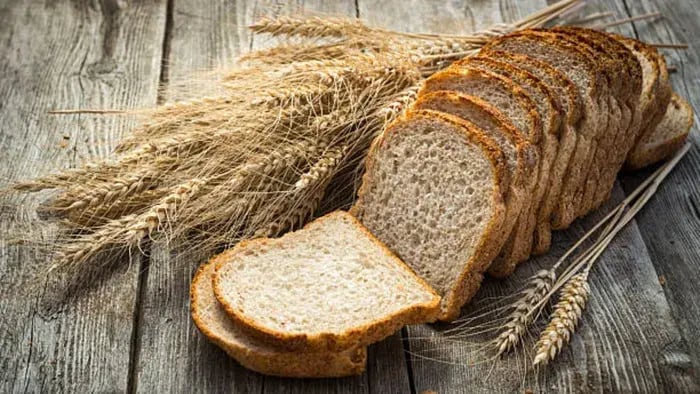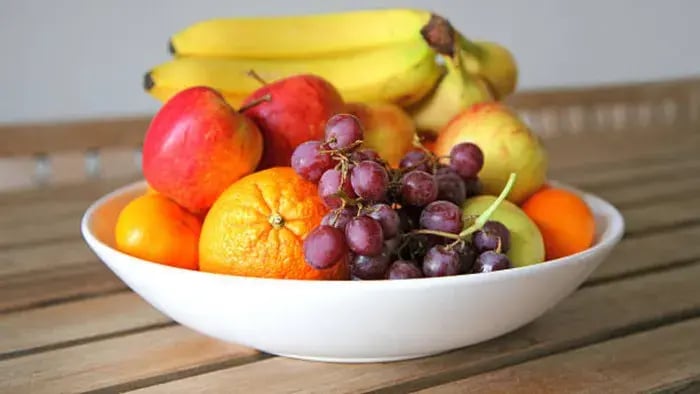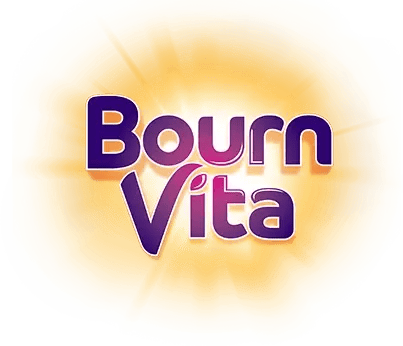- Whole Wheat Bread Instead of White Bread
- Brown Rice or Millets Instead of White Rice
- Roasted Snacks Instead of Fried Snacks
- Homemade Fruit Yogurt Instead of Packaged Flavored Yogurt
- Fresh Juices or Coconut Water Instead of Fizzy Drinks
- Paneer or Sprouts Instead of Processed Cheese
- Peanut Butter Instead of Chocolate Spread
- Idli or Dosa Instead of Instant Noodles
- Dark Chocolate Instead of Milk Chocolate
- Fruit Bowls Instead of Packaged Desserts
Introduction

Teenagers go through one of the most rapid periods of growth, physically and mentally. This stage requires food that gives them steady energy, strong bones, sharp focus, and overall stamina. But it’s also a time when teens tend to reach for fast food and sugary snacks, which may satisfy their cravings but do little for their health in the long run. The good news is that small food swaps can make a big difference without taking away the flavors they love.
Swapping common foods with healthier options means the diet remains enjoyable and nutrient-dense. Swapping refined grains with whole grains, sugary drinks with fresh juices, or fried snacks with roasted options can fuel the body with vitamins, minerals, protein and good fats. These swaps are about upgrading everyday meals so teens can still enjoy their food while meeting their growing needs.
Balanced swaps also help build lifelong healthy habits. Teens who learn to enjoy whole foods are more likely to carry these preferences into adulthood. From stronger immunity to better concentration, every small change adds up to long-term benefits. By making smart food choices now, growth, energy, and overall well-being can be supported naturally during these critical years.
Smarter Choices for Everyday Eating With These 10 Smart Food Swaps for Better Teen Nutrition

Teenage years are full of growth, energy, and endless activity, which makes nutrition more important than ever. The body needs steady fuel to support physical changes, academic focus, and sports or extracurricular. While it’s easy for teens to reach for fast food or sugary treats, small changes in everyday meals can make a big difference. By swapping less nutritious items with healthier alternatives, teens can enjoy the foods they love while still getting the right balance of protein, vitamins, minerals, and good fats.
Whole Wheat Bread Instead of White Bread
According to a study published in Adv Nutr. 2022, white bread, made from refined flour, digests quickly and causes blood sugar spikes, often leaving teens hungry again in just an hour or two. As per a study published in Food Energy Secur. 2015 whole wheat bread, on the other hand, is packed with fiber, B vitamins, and minerals like magnesium and zinc. It keeps digestion smooth, provides lasting energy, and helps improve concentration during study hours.
Brown Rice or Millets Instead of White Rice
Research conducted by Int J Food Sci Nutr. 2019 while white rice is a staple, it loses much of its nutrition during polishing. According to FSSAI, brown rice and millets like foxtail, barnyard, or ragi retain fiber, antioxidants, and minerals. They release energy slowly, making them ideal for active teens who need stamina throughout the day. Millets also provide extra calcium and iron, important for bone growth and blood health.
Roasted Snacks Instead of Fried Snacks
According to Nutrients. 2022 fried chips, pakoras, and samosas may be tempting, but they are high in unhealthy fats that add little value. According to the Dietary Guidelines for Indians, roasted chana, makhana, or oven-baked chips give the same crunch while supplying protein, calcium, and fiber. These snacks are light, travel well in tiffins, and don’t leave teens feeling sluggish. Adding mild spices or seasoning makes them fun and tasty while still being nutritious.
Homemade Fruit Yogurt Instead of Packaged Flavored Yogurt
As per a study published in Curr Dev Nutr. 2019 store-bought flavored yogurts often contain hidden sugars, artificial flavors, and preservatives. Homemade versions are simple, just plain curd mixed with banana or mango chunks. According to FSSAI, this adds probiotics for gut health, calcium for bones, and vitamins from fruits, without unnecessary additives. A bowl of fruit yogurt works perfectly as a filling snack between meals or a healthy dessert option that feels indulgent yet supports growth.
Fresh Juices or Coconut Water Instead of Fizzy Drinks
Fizzy drinks and packaged juices may give a burst of sweetness but come with empty calories that drain energy later. According to FSSAI, fresh juices made from oranges, apples, or carrots bring natural vitamins and minerals, while coconut water restores electrolytes and prevents dehydration. These options are refreshing, light, and provide steady energy for school, sports, or after long hours of study. They also help teens avoid sugar crashes and fatigue caused by sodas.
Paneer or Sprouts Instead of Processed Cheese
Processed cheese slices or spreads often carry high sodium and preservatives with little nutrition. Research conducted by J Food Sci Technol. 2011, highlights that paneer, on the other hand, is packed with calcium and protein essential for strong bones and muscle development. Sprouts, rich in vitamins and easy to digest, add another protein-packed option. Paneer bhurji rolls, sprout salads, or even paneer tikka make tasty and nourishing snacks that are healthier than processed cheese on toast.
Peanut Butter Instead of Chocolate Spread
Chocolate spreads are mostly refined sugar and oil, offering quick taste but no lasting benefit. Study published in J Food Sci Technol. 2015 shows that peanut butter provides protein, vitamin E, and good fats that support brain development and long-lasting energy. It can be spread on whole wheat bread, added to smoothies, or served with apple slices for a delicious, filling snack. For variety, almond or cashew butter can also be tried, giving similar benefits with different flavors.
Idli or Dosa Instead of Instant Noodles
Instant noodles are quick but lack nutrients and often contain high sodium. According to the FSSAI, idlis and dosas, made from fermented rice and urad dal batter, provide protein, probiotics, and complex carbs. They are light on the stomach, keep teens energized, and improve gut health due to fermentation. Served with sambar or chutney, they make a balanced meal that feels comforting and is healthier than a packet of instant noodles.
Dark Chocolate Instead of Milk Chocolate
Milk chocolate is primarily composed of sugar and offers minimal nutritional value, whereas, according to a study published in Prev Nutr Food Sci. 2022, dark chocolate (with a cocoa content of 70% or higher) contains antioxidants, iron, and magnesium. These nutrients help reduce stress, improve blood flow, and support brain health. A small piece of dark chocolate can satisfy sweet cravings while still being a healthier choice, teaching teens how to manage indulgence without overdoing sugar.
Fruit Bowls Instead of Packaged Desserts
Packaged desserts, pastries, or ice creams are high in sugar and unhealthy fats. According to the Food and Agriculture Organization, seasonal fruit bowls made with apples, papayas, pomegranates, or bananas not only satisfy sweet cravings but also provide fibre, vitamin C, and natural hydration. Adding nuts or seeds on top makes them more filling and nutrient-rich. These bowls are colorful, tasty, and fun to eat, encouraging teens to enjoy nature’s desserts instead of processed ones.
Conclusion

The teenage years set the foundation for lifelong health. By choosing whole grains, fresh fruits, protein-rich foods, and natural drinks, teens can enjoy meals that taste good while truly supporting their growth. These swaps don’t take away favorites; they simply replace them with smarter choices that keep the body strong, the mind focused, and the energy steady throughout the day. Small steps today can shape healthier habits for tomorrow.
Her love for storytelling began with reading her grandfather’s speeches, where Tarishi saw the power of words in creating lasting memories. Combining her passions for food and writing, she has turned her life into a fulfilling path of sharing stories that celebrate flavours and how food brings communities together.
The views expressed are that of the expert alone.
The information provided in this content is for informational purposes only and should not be considered a substitute for professional medical advice, diagnosis, or treatment. Always seek the advice of your physician or another qualified healthcare provider before making any significant changes to your diet, exercise, or medication routines.
References
https://www.fao.org/nutrition/education/food-dietary-guidelines/regions/countries/india/en/
https://pmc.ncbi.nlm.nih.gov/articles/PMC9843710/
https://pmc.ncbi.nlm.nih.gov/articles/PMC4711439/
https://pmc.ncbi.nlm.nih.gov/articles/PMC4008736/
https://www.fssai.gov.in/upload/uploadfiles/files/Compendium_Nutra_29_09_2021.pdf
https://pmc.ncbi.nlm.nih.gov/articles/PMC6554456/
https://www.nin.res.in/dietaryguidelines/pdfjs/locale/DGI24thJune2024fin.pdf
https://pmc.ncbi.nlm.nih.gov/articles/PMC9370292/
https://www.fssai.gov.in/upload/uploadfiles/files/Guidance_Notes_Version_2_Millets_29_01_2020.pdf
https://pmc.ncbi.nlm.nih.gov/articles/PMC6512801/
















